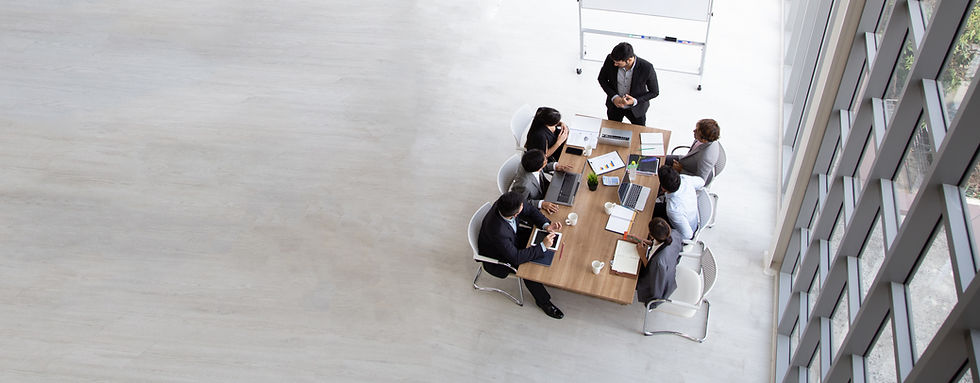Blue Spaces, Neurodesign, and Life Philosophy Design: How Water Shapes the Mind and Inspires Wellbeing
- MA Emma Kocmanek Dikyova, DipArt

- May 27
- 3 min read
In a world filled with notifications, burnout, and an endless pursuit of productivity, many people are searching not just for rest — but for true restoration. Increasingly, the answer isn’t found in another productivity hack, but in something far more timeless: water.
Known as blue spaces — oceans, rivers, lakes, waterfalls, and even fountains — these environments are gaining recognition in neuroscience, environmental psychology, and holistic coaching. They’re not just beautiful. They’re deeply healing, both psychologically and neurologically.
For those of us who practice neurodesign and life philosophy design, blue spaces offer one of the most powerful natural environments for aligning the brain, body, and soul.
What Are Blue Spaces?
Blue spaces are natural or built environments where water is the dominant element. Unlike green spaces — which are already known to reduce stress and improve mood — blue spaces may offer even stronger emotional and physiological benefits.
A study by the Barcelona Institute for Global Health (ISGlobal) found that people who spent time near blue spaces (coasts, lakes, rivers) experienced greater improvements in mood and mental health than those who spent time solely in green spaces like forests or parks.
This doesn’t mean we should abandon trees — but it emphasizes that water environments hold unique power to soothe the nervous system and inspire emotional healing.
As environmental psychologist Dr. Catherine Kelly, author of Blue Spaces: How and Why Water Can Make You Feel Better, writes:
“Blue spaces offer something primal — a place to breathe, reflect, and re-align. Water invites us to release what no longer serves us.”
The Science of Blue: What Water Does to the Brain
Reduces Stress and Regulates the Nervous System
Dr. Mathew White (University of Exeter) found that those living close to the coast report better overall mental health, lower anxiety, and improved wellbeing. Blue spaces calm the amygdala — the brain’s fear center — and stimulate the parasympathetic nervous system, allowing for rest, digestion, and reflection.
From a neurodesign standpoint, this creates an ideal environment for improving self-care, and stepping into more empowered self-narratives.
Improves Focus, Creativity, and Cognitive Clarity
Water environments encourage a relaxed, open attention that reduces cognitive fatigue. According to Attention Restoration Theory, this type of “soft fascination” — like watching ripples or listening to waves — replenishes attention span, supports focus, and enhances motivation and creativity.
This is essential when coaching clients to break through procrastination, reconnect with purpose, or make space for big-picture thinking.
Supports Healing and Emotional Resilience
A well-known study by Roger Ulrich showed that hospital patients with views of water recovered faster and needed less pain medication than those without. Dr. Kelly's own work echoes this, especially in grief and trauma recovery. Blue spaces help regulate emotional intensity and promote resilience.
From a coaching lens, this creates safe conditions for emotional processing, new identity formation, and growth mindset integration.
May Be More Therapeutic Than Trees
While green spaces (like forests and parks) are undeniably healing, recent research suggests that blue spaces may provide even greater benefits. ISGlobal’s findings show that exposure to water environments results in higher levels of emotional restoration, suggesting a unique and amplified calming effect on the brain.
This doesn’t diminish the power of greenery — but highlights the specific emotional signature of water: stillness, movement, and depth.
A Life Philosophy Design Written in Water
Water teaches us to be present, to adapt, and to release. It shows us the power of flow and the art of surrender. In designing a meaningful life, these are not just nice ideas — they are essential principles.
As Dr. Catherine Kelly puts it:
“Blue spaces offer us the chance to stop doing, and start being — to reconnect with something far older and wiser within us.”
Whether you're coaching beside a lake, journaling near a fountain, or simply holding your hands under running water with intention — remember this: you are engaging in one of nature’s most effective healing practices.
Let your life, and your clients’ lives, flow forward — with grace, clarity, and calm.
Resources:
Catherine Kelly, Blue Spaces: How and Why Water Can Make You Feel Better
White et al. (2013), Health & Place
Ulrich, R. S. (1984), Science
Barcelona Institute for Global Health (ISGlobal), 2021
Garrett et al. (2021), Scientific Reports



Comments